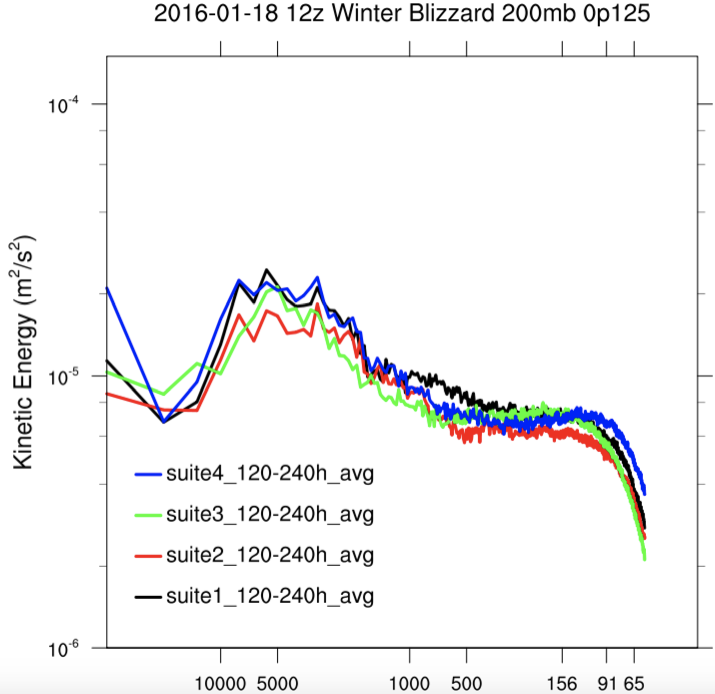Advanced Physics Testing

Spectral Decomposition
Kinetic energy (KE) spectra for the horizontal and vertical velocity forecasts were computed along latitude lines. In the figure below, the 200-hPa horizontal KE results for the case initialized on January 18, 2016 at 12 UTC show that both the ECMWF Integrated Forecast System (IFS) initial condition and the Suite 3 (green) spectra start to fall off sharply due to diffusion at approximately 10Δ. Suites 1 (black), 2 (red) and 4i (blue), however, fall off at a scale closer to 5Δ, indicating that they have a higher effective resolution. Suites 1, 2 and 3 show the expected flattening of the spectrum in the mesoscale indicating a transition from two to three-dimensional turbulence, while the Suite 3 does not.
The corresponding vertical KE results are below. Compared with the horizontal counterpart, the vertical velocity possesses much less energy, and there is less variation as a function of horizontal wavenumber. At 200 hPa, vertical velocity KE shows evidence of two peaks in Suites 3 and 4: one at the synoptic scale at a few thousand kilometers and a second at the mesoscale regime between 5Δ and 9Δ. The mesoscale peak is likely associated with grid-scale convection, waves generated by convection, and other under-resolved small-scale processes. Suite 2 has less energy at the synoptic scales, which presumably is associated with vertical motions associated with large-scale waves.
More results can be found at:
GMTB's Final Report


